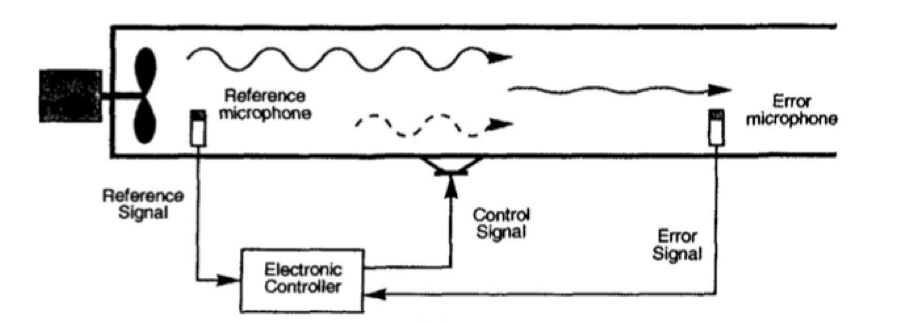Design team members: Hisham Abdulrrazek, Ricky D’Sa, Bill Ma
Supervisors: Tariq Naqvi, Dr. John Vanderkooy (project advisor)
Background
Noise can be found in all environments. Whether a person is sitting at home, in a car, or in an office, noise will always be found. Unwanted noise can be found in many forms. For instance sitting at home, one can often hear the sound of cars driving by, the hum of a busy road, or the sound of people talking in the distance (Hogan, 2010).
For the SYDE 4th year design project, this group is exploring the possibility of developing a device that is capable of active noise cancellation in home appliances. Inspiration for this project was brought on by the lack of an in-home active noise cancellation system and the potential for such a device to be useful.
Although there currently exist a number of ways to attenuate noise, the majority of the methods take a passive noise reduction approach. For example, an individual can reduce their exposure to noise at home by wearing earplugs, by playing loud music, or by using the only widely available active noise reduction option - wearing noise cancelling headphones. There exists no option that will allow an individual to eliminate noise at it’s source.
Project description
The initial stages of the project led us to change directions from noise cancellation of a refrigerator, followed by a microwave, and finally a kitchen range hood. The analysis conducted on the earlier appliances posed a lot of challenges in obtaining significant global noise attenuation. One of the main issues included the presence of multiple noise sources which hindered the ability to control and successfully capture all signals synchronously. Furthermore, range hoods reduces the problem to a 1-dimensional system which simplifies the design significantly.
Design methodology
A feedforward control system will be built into the range hood duct so as to achieve an adaptive filtering procedure. The system will consist of two microphones and a loudspeaker to as the interfaces between the physical range hood and the control system. The control system will use the reference signal to generate an anti-noise signal that be played back by the speaker. Then, the error signal will be used to automatically adjust the system parameters to continuously improve (i.e. adapt) the anti-noise signal. The objective is to minimize the loudness of the error signal, which is what the user would hear.

Figure 1: Feedforward System for 1D Duct System (Hansen, 2001)
References
Hansen, C. H. (2001). Understanding Active Noise Cancellation. New York, NY, USA: Taylor & Francis.